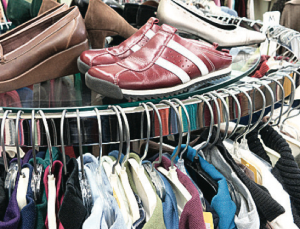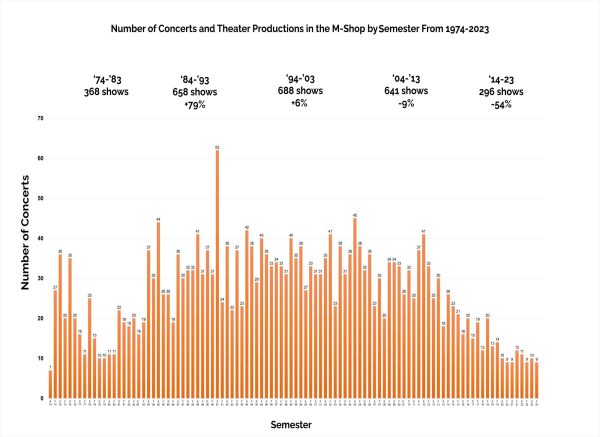The new age of buying clothes
September 13, 2020
With fast fashion becoming a controversial trend in the past few years, many have been looking to find a more environmentally friendly and sustainable alternative for adding new pieces to their wardrobe.
As many look to find ways to keep the environment cleaner and avoid unethical uses of labor, thrifting and resale stores have become one of the most popular ways for individuals to spruce up their style without adding to the issues that come with fast fashion.
However, as thrifting and reselling have become more popular, some have raised questions about the issues that may come along with using thrift stores as the new best alternative.
“I do worry about the changing appearance of thrifting sometimes because I have watched prices rise,” said Jillian , senior in linguistics. “It does bother me because the clothes are donated, and so, you know that the increase in prices is just giving more money to the corporation.”
As thrifting became “trendier” in the mainstream media of fashion and lifestyle, the prices of everything within the thrift stores seemed to hike up. This can be seen as problematic largely because many people who still shop at thrift stores do it out of necessity and not so much from just wanting new, fun and fashionable pieces.
“I would say for about 75 percent to 80 percent, it’s a necessity, and then, like, 20 percent for fun,” said Carrie Sarno, assistant manager of The Hillcrest Thrift Shop in Kansas City. “Necessity, as in, not that everybody is in dire need, necessarily, but that they can stretch their dollar more here than they can other places.”
Other issues that can arise from making thrifting the new “best” way to shop is that, oftentimes, individuals will come in to buy the pieces people would actually want and then resell them for a much higher price. This can cause what is left in the store to be picked over and lower quality. Many times, people will buy plus-sized items because the oversized look is “trendy,” and then people who need the actual plus-sized clothing get left behind.
Though thrifting and resale stores have seen issues as they become a more regular part of many individuals’ daily lives, there have also been positives that cannot be overlooked from the fact that more people have been shopping secondhand.
“We love that resale is becoming more mainstream,” said Holly Eide, manager of The Loft in Ames. “Reusing clothing is better for the environment and the economy. I believe more people have realized that it doesn’t have to be new to have value and that just because you are ready to be done with a piece of clothing doesn’t mean it isn’t worth something to someone else.”
Even when you are somebody who regularly goes thrifting, there are always things you can do to make sure that you are allowing everybody who needs it and wants it to still have equal opportunity.
“I think something we can always do to be mindful of people who shop for necessity is to shop elsewhere once and a while,” Gabby said. “There are a lot of options to shop online for secondhand pieces, like Depop. These options are a little pricier, so if you are able to afford it, you can choose these routes. You still get the benefits of reusing and the ability to find really unique pieces.”
When looking toward how to make consumerism better for the environment as well as those who work within it, fast fashion and thrifting are often one of the first parts of the conversation. While there are definite positives and negatives to secondhand shopping, there is no question that, in the long run, it can help both our waste overflow and our overall shopping practices. The most important aspect of thrifting more often, as is the case with many things in life, is to be mindful of your habits and also those around you.

















